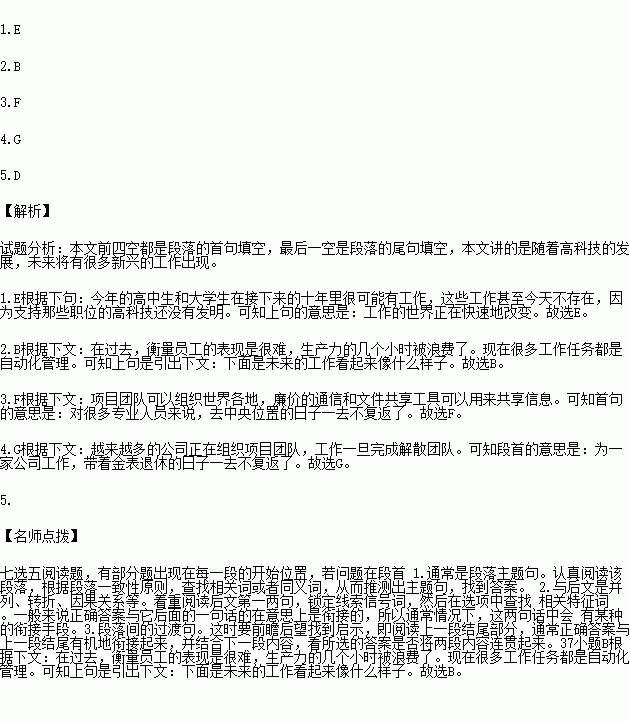题目内容
根据短文内容,从短文后的选项中选出能填入空白的最佳选项,并在答题卡(卷)上将该项涂黑,选项中有两项为多余选项。
1. Most students graduating from high school and college this year will probably have jobs in the next decade that don 't even exist today because the technology to support those positions hasn 't even been invented yet .The concepts of going to work ,having one career ,moving for a new job ,and wasting time or avoiding doing any work may soon be a distant memory as the world of work as we know it is replaced by a brave new world where few travel to their jobs,work a 9-to -5 day ,or sit in endless staff meetings
2. In the past it was difficult to measure employee performance, and hours of productivity were wasted. Now many job tasks are measurable with automated time and task tools and individual performance can be directly linked to a company's bottom-line results.
3. Project teams can be organized all over the world, and cheap communication and document sharing tools such as Skype and Google docs can be used to share information. In addition, for many jobs, where you live may have little relevance in the future; you could be competing against a global rather than a local talent pool.
4. More and more companies are organizing project teams and disbanding the teams once the work is completed.
While all this sounds pretty scary at first glance, work in the future may be more rewarding than ever. People will have more freedom and control over their work environment and schedule and earnings will be based more on merit (绩效)than location. While it's true that not every job will fit into this futuristic (想象的)pattern, many will. 5.
A:No one knows what the future work is like .
B:Here's what the future of work looks like.
C:Do you know what you want to do in the future?
D:Will your job be part of the future of work?
E:The world of work is changing quickly .
F:For many professionals, gone are the days of traveling to a central location.
G:The days of working for one company and retiring with the gold watch are gone.

